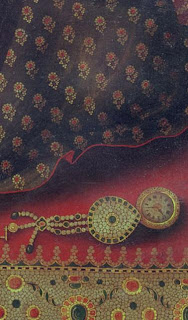Bosko Jugovic
1922
Some works of an Artist
Wounded Montenegrin (1882.) Oil on canvas, 186 × 114 cm (at the Gallery of Matica Serbian in Novi Sad)
Fencing (around 1884). Oil on canvas, 60.5 × 40.5 cm (at the National Museum in Belgrade)
Fencing (around the 1883rd) sketch, pencil on paper, 90.5 x 59 - cm} {- (the Museum of the City)
The Ambush (1884 - 1886th) oil on canvas, 27.5 × 38 cm (at the Gallery of Matica Serbian in Novi Sad)
Traitors (1886.) Oil on canvas, 148 x 100 cm (at the National muzjeu in BelgradeKicenje
Cockfighting (1920 - 1926.) Oil on canvas, 95 × 63 cm, (in the Gallery of Matica Serbian in Novi Sad)
The Great Migration 1896.) Oil on canvas, 190 × 126 cm (in the [National Museum in Pancevo [1])
The Great Migration and Migration of Serbs (1908, 1895). Heliogravura: sketch, pencil on paper, 94.8 h 62.3 - {cm} -, 119 h 84 - {cm} - (at the Museum of the City of Belgrade)
King Milutin (1906-1912.) Oil on canvas, 131.5 × 201 cm (at the Cathedral Church of Karlowitz)
Archbishop Danilo (1906-1912.) Oil on canvas, 121 x 200 cm (at the Cathedral Church of Karlowitz)
Crucifixion (1919.) Oil on canvas, 174 × 275 cm (at the Gallery of Matica Serbian in Novi Sad)
Portrait of wife MUNI (1925.) Oil on canvas, 73 × 99 cm (at the Gallery of Matica Serbian in Novi Sad)
Self-Portrait (after 1930.) Oil on canvas, 29 × 46 cm (at the Gallery of Matica Serbian in Novi Sad)
Tito (1947.) Oil on canvas, 100 × 150.5 cm (at the National Museum in Belgrade)
Tito ((1952). Sketch, pencil on paper, 30.5 h 24 - {cm} - (at the Museum of the City of Belgrade)
Fairyland - SAN Parsifal (1906). Lithographs and heliografija (the Museum of the City)
Portrait of Milutin Milankovic (1943.) Oil on canvas
References
http://www.muzejvrsac.org.rs/Izlozbe/PajaJ/PajaJovanovicE.htm
http://en.wikipedia.org/wiki/Paja_Jovanovic


















































